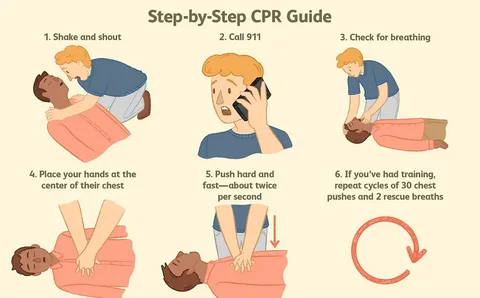When someone suddenly collapses, stops breathing, or becomes unresponsive, it can be overwhelming to know what to do next. One of the most common questions in CPR training is: what is the indication for mouth-to-mouth rescue breaths? Understanding when to deliver rescue breaths can be the difference between life and death, especially in cases where oxygen supply is critical. Whether you’re a parent, fitness trainer, healthcare worker, or simply a concerned bystander, knowing these guidelines can prepare you to respond quickly and effectively.
Why Rescue Breaths Matter
Cardiopulmonary resuscitation (CPR) is designed to keep oxygen circulating in the body until advanced help arrives. Chest compressions maintain blood flow, but without oxygen, tissues and organs—especially the brain—can only survive for a short time. Rescue breaths provide vital oxygen to the lungs, which is particularly important in emergencies where the victim’s breathing has stopped due to airway or respiratory problems, rather than cardiac arrest.
Common Indications for Mouth-to-Mouth Rescue Breaths
Rescue breaths are not always necessary, but they are essential in certain scenarios. Some common indications include:
- Drowning incidents – Victims often lack oxygen due to airway obstruction from water.
- Drug overdose – Respiratory depression is common, making oxygen delivery critical.
- Choking that leads to unresponsiveness – Once the airway is cleared, breaths are needed.
- Infants and children – Pediatric patients are more likely to suffer respiratory failure than sudden cardiac arrest.
- Severe asthma attacks or respiratory diseases – When breathing stops due to airway compromise, oxygen support is crucial.
These situations highlight why recognizing the need for rescue breaths is a vital part of emergency response.
Compression-Only CPR vs. Rescue Breathing
Many people have heard of “hands-only CPR,” which is highly effective in sudden cardiac arrest, especially for adults. However, this approach may not be enough in respiratory-related emergencies. For example:
- Hands-only CPR: Recommended for untrained rescuers or in cardiac-related events.
- CPR with rescue breaths: Recommended for children, infants, drowning victims, or when breathing has stopped due to non-cardiac causes.
In short: if the heart has stopped suddenly, compressions may be enough to sustain life until help arrives. But if the root problem is lack of oxygen, rescue breaths become essential.
How to Deliver Mouth-to-Mouth Rescue Breaths
Knowing when to give rescue breaths is just the first step. Knowing how to do it effectively ensures that oxygen actually reaches the lungs. The basic steps include:
- Check responsiveness and breathing – Tap the person and look for chest rise or listen for air movement.
- Call for help – Dial emergency services or ask someone nearby to do so.
- Open the airway – Tilt the head back and lift the chin.
- Deliver breaths – Pinch the nose, seal your mouth over theirs, and give two slow breaths (about one second each) with visible chest rise.
- Continue with compressions – Alternate 30 compressions with two rescue breaths.
For infants, the technique is slightly different: cover both the nose and mouth with your mouth and deliver gentler puffs of air.
Barriers and Modern Safety Precautions
One concern many rescuers have is the risk of infection or disease transmission. To address this, first aid kits often contain barrier devices such as pocket masks or face shields, which reduce direct contact while still allowing effective ventilation. Training also emphasizes that the benefits of delivering rescue breaths in emergencies often outweigh the potential risks.
Why Training Is Essential
Reading about CPR is a great start, but proper training builds the confidence to act under pressure. Formal certification programs provide hands-on practice, reinforce recognition of indications for rescue breaths, and teach updated guidelines from organizations like the American Heart Association (AHA) and Red Cross.
Final Thoughts
Knowing the answer to what is the indication for mouth-to-mouth rescue breaths can empower you to take quick, life-saving action when it matters most. In emergencies where oxygen deprivation is the root cause, rescue breaths are an essential tool that can sustain life until professional help arrives. If you’re ready to gain the skills and confidence to respond effectively, training with a trusted provider makes all the difference. That’s where Simple CPR comes in—offering convenient, online CPR and first aid certification programs designed for healthcare professionals, parents, caregivers, and anyone who wants to be prepared. Start your training today and be ready to save a life tomorrow.

